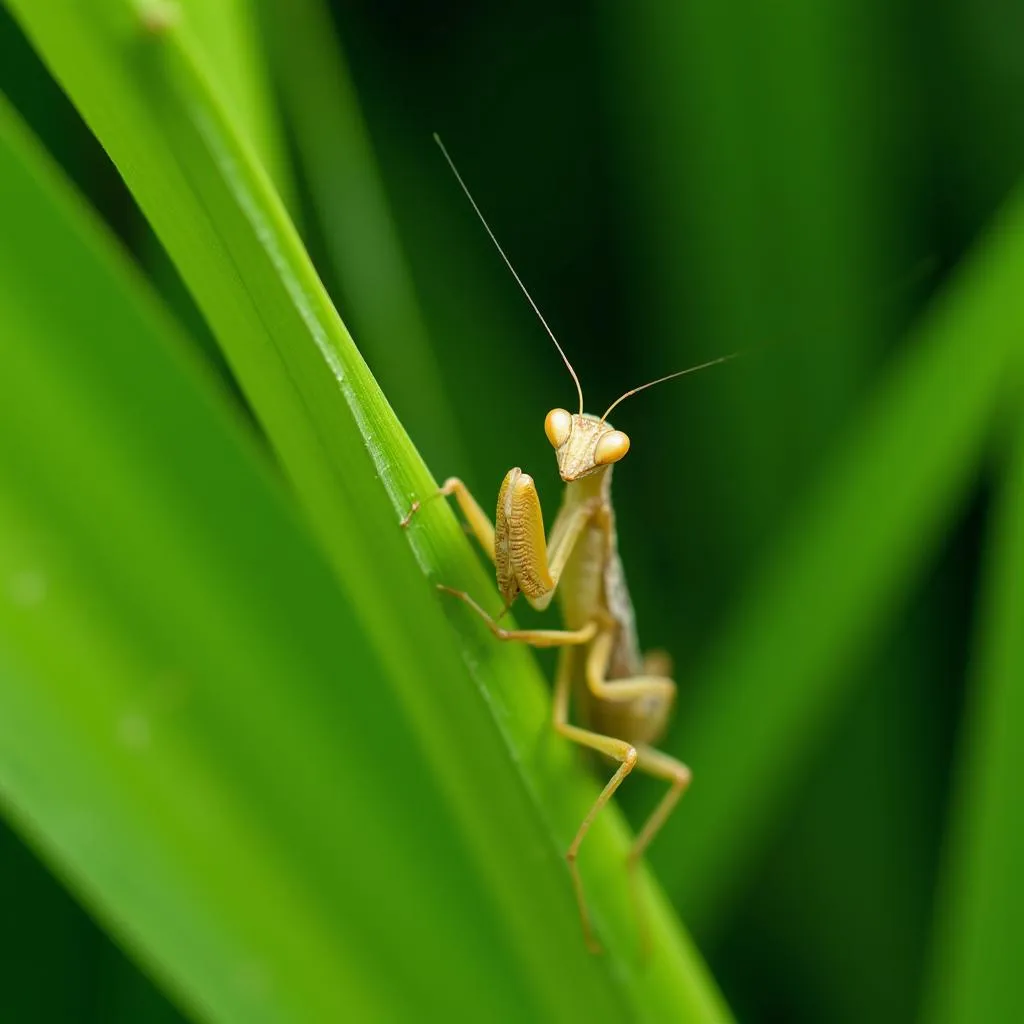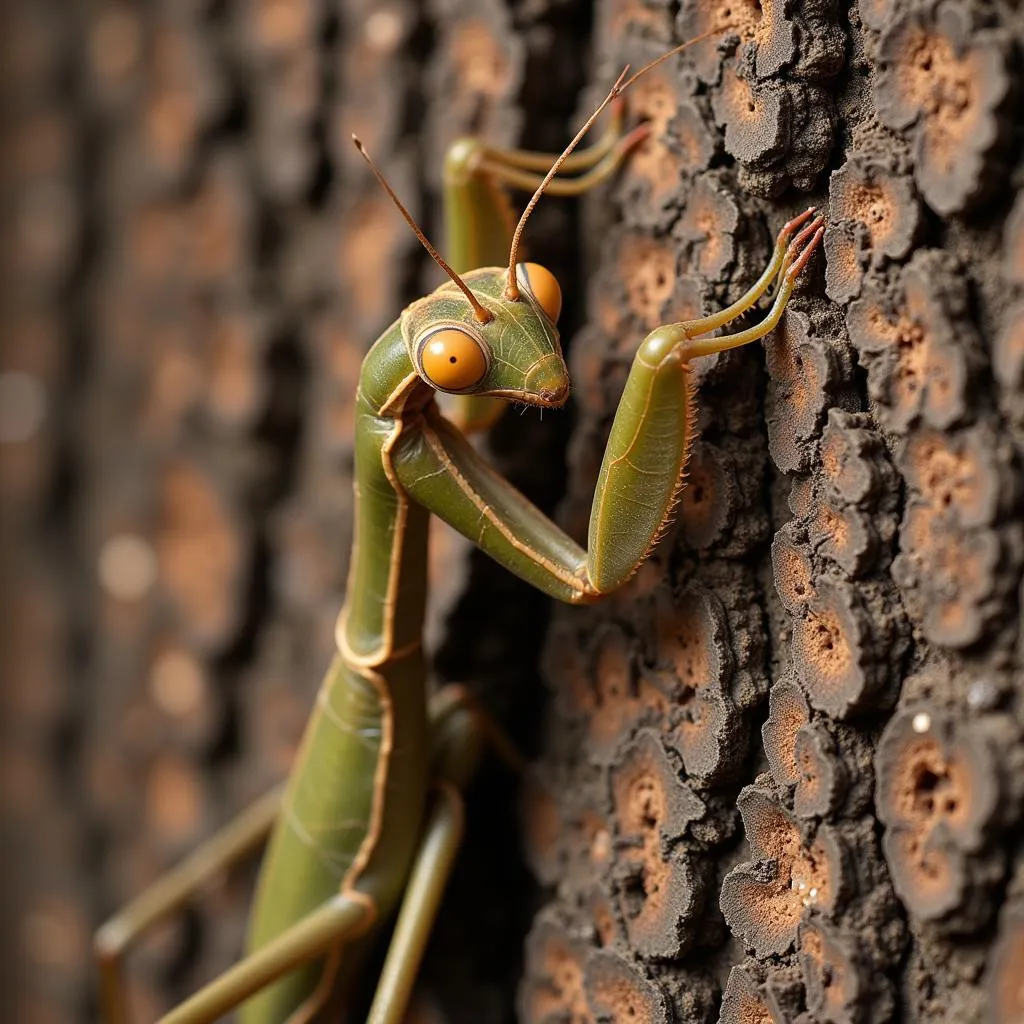Praying mantises are fascinating creatures known for their unique appearance and predatory skills. These masters of camouflage are often found blending seamlessly into their surroundings, leading some to wonder: can praying mantis change color?
While praying mantises can’t change their color as dramatically as chameleons, they do possess some ability to adjust their appearance. This adaptation primarily serves to enhance their camouflage, allowing them to ambush unsuspecting prey and evade predators.
Understanding Praying Mantis Coloration
A praying mantis’s color is determined by pigments in its exoskeleton. These pigments reflect light, creating the colors we see. Unlike animals with chromatophores (specialized pigment-containing cells that allow for rapid color changes), mantises have a more limited capacity for color shifts.
 Praying mantis camouflaged on a green leaf
Praying mantis camouflaged on a green leaf
Factors Influencing Color Variation
While not as drastic as a chameleon’s transformation, several factors can influence a mantis’s color:
- Species: Different species have evolved to blend into specific environments. For example, the orchid mantis has developed a stunning pink and white coloration to mimic orchid flowers.
- Molting: As a mantis grows, it sheds its exoskeleton in a process called molting. During this time, slight color variations may occur based on factors like diet and environmental conditions.
- Environment: While not instantaneous, prolonged exposure to different light conditions or backgrounds may lead to subtle color adaptations over time. For example, a mantis raised in a green environment might develop a slightly deeper green hue.
The Purpose of Color Change: Survival
The subtle color shifts in praying mantises primarily serve their survival in two key ways:
- Camouflage for Hunting: By blending into their surroundings, mantises become nearly invisible to their prey. This allows them to patiently stalk and ambush insects, making them highly effective predators.
- Protection from Predators: Their camouflage also provides a defense mechanism. By mimicking leaves, branches, or flowers, mantises can evade detection from larger predators like birds and reptiles.
 Brown praying mantis blending with tree bark
Brown praying mantis blending with tree bark
Can a Mantis Change Color at Will?
The short answer is no, praying mantises cannot change color at will like chameleons. Their color adaptations are gradual and primarily influenced by environmental factors and their molting cycle.
Fascinating Examples of Mantis Camouflage
The insect world offers remarkable examples of how mantises have evolved to match their habitats:
- Orchid Mantis: This species displays vibrant pink and white coloration, perfectly mimicking the delicate petals of an orchid flower. This allows them to attract pollinators, which become their unsuspecting prey.
- Dead Leaf Mantis: True to its name, this mantis resembles a dried leaf, complete with brown and withered-looking wings. This camouflage makes them nearly invisible among fallen foliage.
- Flower Mantises: Various flower mantis species have evolved to mimic different blossoms. Their bodies might resemble colorful petals, allowing them to hide in plain sight while waiting to ambush unsuspecting insects.
Conclusion
While praying mantises may not possess the dramatic color-changing abilities of chameleons, their subtle adaptations are no less fascinating. Their ability to blend seamlessly into their environment highlights the power of evolution in shaping remarkable survival strategies in the animal kingdom. The next time you encounter a praying mantis, take a moment to appreciate its remarkable camouflage—a testament to the wonders of the natural world.
Do you need help choosing the perfect colors for your home? Our team at Color Box Hà Nội is here to guide you. Contact us at 0373298888 or [email protected]. Visit our showroom at 86 Cầu Giấy, Hà Nội, for personalized consultations. Let us help you create a space that reflects your unique style!

